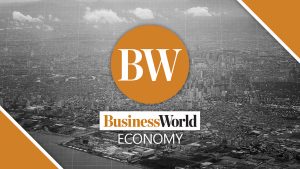Beauty is a concept Filipinos are intimately familiar with, because it’s all around us in our landscape. culture, and people. The origin story of our people, Si Malakas at Si Maganda (the Strong Man and the Beautiful Woman) suggest how much we take pride in beautiful things. Our tourism industry is especially proud of our pristine blue waters and unspoiled beaches. Our passion for beauty pageants is such that being crowned is deemed the equivalent of boxer Manny Pacquiao’s championship belts.
But the obsession with physical beauty does not stop there. A small V-shaped face, tantalizing large eyes, pouty lips, white skin, and a slim body are only a few of the beauty standards prevalent in our society. Some of us are gifted with natural personal beauty. Thanks to science, the general public can now aspire to these standards through cosmetic medical procedures. With the growing popularity of such procedures, increasing market demand, and the proliferation of service providers, the government cannot simply ignore the revenue potential of this industry.
TAX ON COSMETIC PROCEDURES
Section 150-A of the Tax Code imposes a tax of 5% on the gross receipts derived from the performance of services, net of excise tax and value-added tax (VAT), covering invasive cosmetic procedures, surgeries, and body enhancements directed solely towards improving, altering, or enhancing the patient’s appearance and do not meaningfully promote the proper function of the body or prevent or treat illness or disease.
POSSIBLE GRAY AREAS
Based on Section 2.4 of Revenue Regulations (RR) 2-2019, an invasive cosmetic procedure refers to a “cosmetic surgery that is carried out by entering the body through the skin or through a body cavity or anatomical opening, but with the smallest damage possible to these structures.” These include, but are not limited to, the following: liposuction, mammoplasty, breast lift, buccal fat removal, buttocks augmentation, chin augmentation, facelift and neck lift, thread lift, embedded protein threads, hair restoration/transplantation, eyelid surgery, vaginal plastic surgery, abdominoplasty or tummy tuck, auto grafting, rhinoplasty/alar trimming, and otoplasty.
However, the 5% excise tax does not apply to actual medical procedures, specifically, those necessary “to ameliorate a deformity arising from, or directly related to, a congenital or developmental defect or abnormality, a personal injury resulting from an accident or trauma, or disfiguring disease, tumor, virus, or infection.” In addition, cases and treatments covered by the National Health Insurance Program or PhilHealth are not subject to this tax. Non-invasive cosmetic procedures (e.g., facial, peeling, laser treatment, etc.) are likewise exempt.
Do bear in mind that the list is not exclusive. Thus, though instructive, the RR does not address the issue of who should determine whether or not an invasive procedure is excisable. What should be the evaluator’s professional qualifications, and what are the acceptable valid supporting documents to prove such claims? With the reopening of aesthetic clinics post-pandemic, the Bureau of Internal Revenue (BIR) should clarify these matters soon.
THE VAT BASE
As clearly stated in the law and in the implementing RR, the 5% excise tax is based on the gross receipts derived from the performance of services, net of excise tax and VAT.
In determining the VAT base, however, the government’s position is that the gross receipts are inclusive of the 5% excise tax.
I beg to disagree.
The VAT base for the sale of services is gross receipts. Under Section 108 (A) of the Tax Code, it is defined as “the total amount of money, actually or constructively received for services performed.” Given this definition, only amounts received for services rendered are subject to VAT. The law does not specify that excise tax forms part of gross receipts.
The value charged to the patient for an invasive cosmetic procedure does not include the 5% excise tax. It is thus only collected by the service provider and remitted to the government and recorded as a balance sheet item.
This is in contrast to the VAT base for the sale of goods or properties where gross selling price is inclusive of excise tax. Under Section 106 (A) of the Tax Code, gross selling price means the total amount of money which the purchaser pays to the seller in consideration of the sale of the goods. The law specifically states that “Excise tax, if any, on such goods shall form part of the gross selling price.” Similarly, the VAT base for imports of goods includes excise tax.
The TRAIN Law did not adjust the definition of “gross receipts” for the sale of services; thus, it cannot be amended unilaterally through the issuance of an administrative regulation.
Although taxes are the lifeblood of the nation, the government should not only focus on raising collections but also promoting promising industries. With the opening of borders for travel, for example, tourism is set to register growth. Because medical tourism to countries where medical procedures cost less is becoming more mainstream, the government should also consider the potential of medical services to help drive the recovery.
The views or opinions expressed in this article are solely those of the author and do not necessarily represent those of Isla Lipana & Co. The content is for general information purposes only, and should not be used as a substitute for specific advice.
Renz Daniel Ermitanio is a manager of the Tax – Client Accounting Services group of Isla Lipana & Co., the Philippine member firm of the PwC global network.
